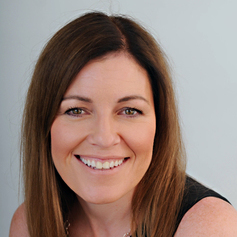BLOG
Letting out your holiday home

If you have a holiday home and decide to let it out, you may be able to benefit from the slightly more generous tax rules that apply to furnished holiday lettings as compared to other types of let, such as a residential let.
To qualify as a furnished holiday let, the property must be furnished and must be in the UK or the EEA. It must also be let on a commercial basis and pass all three occupancy tests.
Test 1 – pattern of occupation
Test 1 is not met if the total of all lettings that exceed 31 continuous days is more than 155 days in the year. So, for example, if there are lets of 63 days, 32 days, 35 days and 34 days (totalling 164 days), the test is not met and the property is not a furnished holiday letting. A normal holiday letting pattern of one or two week lets will pass the test.
Test 2 – availability conditions
The property must be available for letting for at least 210 days in the tax year. Days when the landlord stays in the property do not count.
Test 3 – the letting condition
The property is let commercially as furnished holiday accommodation to the public for at least 105 days in the year. Lets of more than 31 days do not count (unless the let is extended beyond 31 days for unforeseen circumstances, such as the holidaymaker falling ill).
Second bite at the cherry
As far as test 3 is concerned, it may still be possible for the let to qualify as a furnished holiday letting even if it is not let for 105 days in the tax year by using the following elections:
- an averaging election; or
- a period of grace election.
Both elections can be used to help a property qualify as a furnished holiday let.
Averaging election
This is useful where the landlord has more than one holiday let – the election allows test 3 to be met if, on average, the properties are let for at least 105 days in the tax year.
So, if a landlord has three holiday cottages which are let, respectively, for 150 days, 98 days and 127 days in the tax year, on average, the properties are let for 125 days in the tax year (375 divided by 3) and test 3 is met. If the test is applied to each cottage individually, the one let for 98 days would not qualify – by making an averaging election, all properties qualify.
Period of grace election
A period of grace election can be made where there was a genuine intention to meet the letting condition, but this did not materialise. The election can be made initially where the letting condition was met in the previous tax year. A further period of grace election can be made the following year if the letting condition is again not met. However, if the letting condition is not met the following year, the property no longer qualifies as a furnished holiday let.
Tax benefits
Qualifying as a furnished holiday let has a number of benefits:
- capital gains tax reliefs for trader – business asset rollover relief, entrepreneurs’ relief, relief for gifts of business assets, and relief for loans to traders – are available;
- plant and machinery capital allowance is available for items such as furniture, fittings and equipment;
- profits count as earnings for pension purposes.
But, remember, furnished holiday lets form a separate property business and the profits must be worked out separately from other types of let.
Get in touch with Inform if you need us to help with your tax return.
Read more of Inform's tax blogs:
Calculating your dividend tax bill
Claiming tax relief for employment expenses






.jpg?width=1500&height=1000&name=amy-hirschi-K0c8ko3e6AA-unsplash-(5).jpg)

